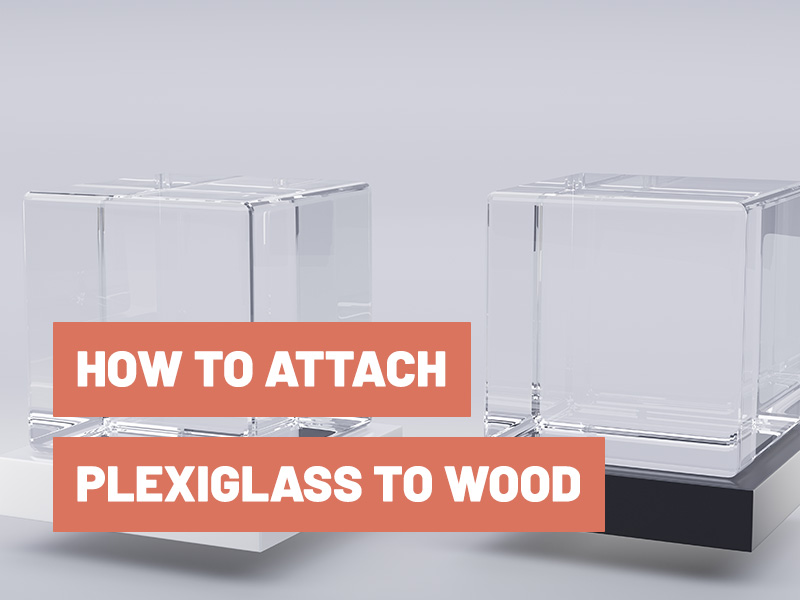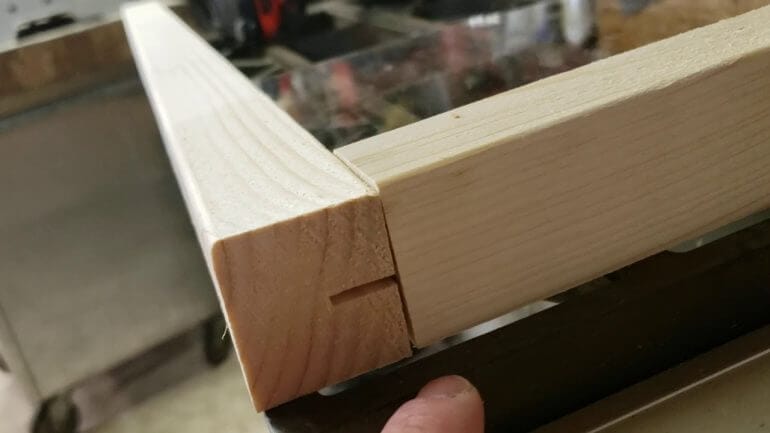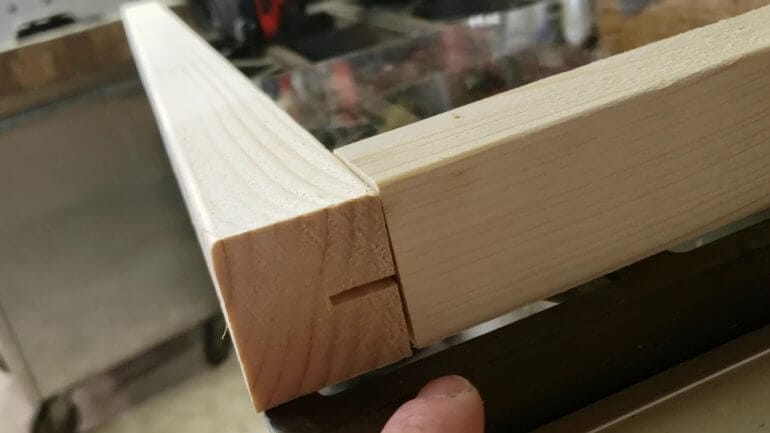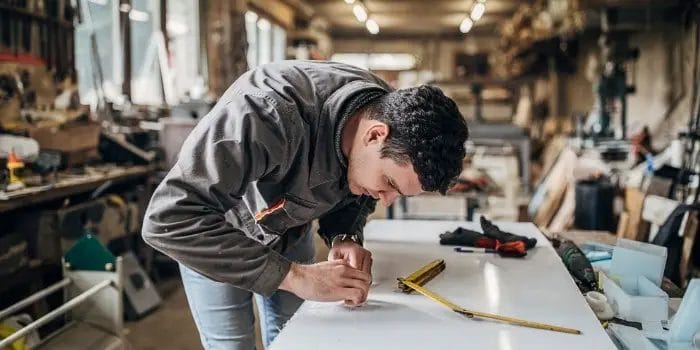Attaching plexiglass to wood can be a straightforward process that offers durability and visual appeal to your projects. Whether you’re working on a DIY project or a professional installation, knowing how to attach plexiglass to wood properly is essential. In this guide, we will explore various methods such as using adhesive, screws, or brackets to securely fasten plexiglass to wood surfaces. With the right techniques and tools, you can achieve a seamless and sturdy bond between the two materials, ensuring a long-lasting and aesthetically pleasing result.

Step-by-Step Guide: Attaching Plexiglass to Wood
Attaching plexiglass to wood can be a useful technique for various projects, such as building a display case or creating a protective barrier. Plexiglass, also known as acrylic, is a lightweight and durable material that is resistant to shattering, making it a popular choice for DIY enthusiasts. In this section, we will provide you with a step-by-step guide on how to attach plexiglass to wood, ensuring a secure and professional-looking result.

Materials You Will Need:
- Plexiglass sheet
- Wooden surface
- Drill
- Drill bits
- Masking tape
- Clamps
- Screws
- Screwdriver
- Sandpaper
Step 1: Measuring and Preparing the Materials
Start by measuring the dimensions of the plexiglass sheet and the wooden surface where you intend to attach it. Mark the desired cutting lines on the plexiglass using a ruler and a marker. Ensure that the wood surface is clean and free from any debris or dust that may affect the adhesion.
Step 2: Drilling Pilot Holes
Using a drill and an appropriate sized drill bit, create pilot holes along the marked cutting lines on the plexiglass sheet. Make sure the drill bit matches the diameter of the screws you will be using. These pilot holes will prevent the plexiglass from cracking or splitting when you attach it to the wood.
Step 3: Applying Masking Tape
To further prevent any potential damage to the plexiglass, apply masking tape along the edges of the sheet where you will be drilling. This will act as a protective barrier, reducing the risk of chipping or cracking during the attachment process.
Step 4: Aligning and Clamping
Position the plexiglass sheet onto the wooden surface, aligning it according to your measurements. Use clamps to hold the plexiglass securely in place. This will ensure that it remains in the desired position while you attach it to the wood.
Step 5: Securing with Screws
Using the pilot holes as a guide, insert screws through the plexiglass and into the wood. Start by lightly tightening the screws, ensuring that the plexiglass remains aligned. Once all the screws are in place, gradually tighten them, but be cautious not to overtighten as it may cause cracks in the plexiglass.
Step 6: Finishing Touches
Once the plexiglass is securely attached to the wood, use a screwdriver to tighten the screws further if needed. Inspect the edges of the plexiglass for any roughness or sharp edges. If necessary, carefully sand the edges using sandpaper to achieve a smooth and polished finish.
Summary
Attaching plexiglass to wood can be a straightforward process if done correctly. By following this step-by-step guide, you can ensure a secure and aesthetically pleasing attachment. Remember to measure accurately, drill pilot holes, use clamps for alignment, and tighten screws gradually to prevent any damage to the plexiglass. With patience and attention to detail, you can achieve professional-looking results for your woodworking projects.

Best Practices for Securing Plexiglass to Wood
When it comes to securing plexiglass to wood, there are a few best practices to keep in mind in order to ensure a secure and long-lasting bond. Whether you are working on a DIY project or a professional installation, following these guidelines will help you achieve the best results.
1. Choose the Right Adhesive
One of the most important factors in securing plexiglass to wood is selecting the right adhesive. There are several options available, but not all adhesives work well with plexiglass. It is recommended to use a solvent-based adhesive that is specifically designed for bonding plexiglass to wood. This type of adhesive provides a strong and durable bond.
2. Clean and Prepare the Surfaces
Before applying the adhesive, it is crucial to clean and prepare both the plexiglass and the wood surfaces. Use a mild soap and water solution to remove any dirt, oil, or dust from the surfaces. Rinse thoroughly and allow them to dry completely. Next, lightly sand both surfaces to create a rough texture, which will help the adhesive bond better.
3. Apply Adhesive Properly
When applying the adhesive, follow the manufacturer’s instructions carefully. Apply a thin, even layer of adhesive on both the plexiglass and the wood surface. Use a brush or a roller to spread the adhesive evenly. Avoid applying too much adhesive, as it can lead to uneven drying and weaken the bond.
4. Clamp the Plexiglass
After applying the adhesive, clamp the plexiglass to the wood to ensure a tight bond. Use clamps that are specifically designed for woodworking. Place the clamps around the edges of the plexiglass, applying even pressure. Make sure the plexiglass is aligned properly before tightening the clamps. Leave the clamps in place for the recommended drying time specified by the adhesive manufacturer.
5. Allow Sufficient Drying Time
Proper drying time is essential for a strong bond between plexiglass and wood. It is important to allow sufficient time for the adhesive to cure and fully dry. Follow the manufacturer’s instructions regarding the recommended drying time. Avoid moving or applying any stress to the secured plexiglass until the adhesive is completely cured.
6. Consider Mechanical Fasteners
In addition to using adhesive, you may also consider using mechanical fasteners to further secure the plexiglass to wood. Screws or nails can provide additional support and stability. If using mechanical fasteners, make sure to pre-drill pilot holes in the plexiglass to prevent cracking.
7. Regular Maintenance
After securing plexiglass to wood, it is important to perform regular maintenance to ensure the longevity of the bond. Clean the surface regularly using a mild cleaner and a soft cloth. Avoid using harsh chemicals or abrasive materials that can damage the plexiglass or weaken the adhesive bond.
By following these best practices, you can achieve a strong and secure bond when securing plexiglass to wood. Remember to choose the right adhesive, properly clean and prepare the surfaces, apply the adhesive correctly, clamp the plexiglass, allow sufficient drying time, consider mechanical fasteners if necessary, and perform regular maintenance. Following these guidelines will help you achieve a professional-looking and durable result for your project.

Tips for Maintaining the Bond between Plexiglass and Wood
When it comes to creating a strong and durable bond between plexiglass and wood, there are a few important tips to keep in mind. Whether you’re working on a DIY project or a professional woodworking task, ensuring a secure bond between these two materials is crucial for the longevity and strength of your project. In this section, we will outline the essential tips and techniques for maintaining the bond between plexiglass and wood.
1. Clean and Prepare the Surfaces
Prior to bonding plexiglass and wood together, it is essential to clean and prepare the surfaces. Both the plexiglass and wood should be free from any dirt, dust, or moisture. Use a mild detergent or rubbing alcohol to clean the surfaces thoroughly. Allow the surfaces to dry completely before proceeding with the bonding process.
2. Choose the Right Adhesive
Choosing the right adhesive is key to achieving a strong bond between plexiglass and wood. There are various types of adhesives available in the market, such as epoxy, cyanoacrylate (super glue), or polyurethane-based adhesives. Consider the specific requirements of your project and select an adhesive that is suitable for bonding these two materials.
3. Apply Adhesive Correctly
When applying the adhesive, it is essential to follow the manufacturer’s instructions carefully. Apply the adhesive evenly and uniformly on both the plexiglass and wood surfaces. Ensure that you cover the entire area that will be in contact with each other to create a strong bond.
4. Allow Sufficient Curing Time
Once the adhesive is applied, it is crucial to allow sufficient curing time. The curing time will vary depending on the type of adhesive you’ve chosen. Follow the manufacturer’s instructions for the recommended curing time. Avoid applying any pressure or stress on the bond until the adhesive has fully cured.
5. Test the Bond
Before considering the bonding process complete, it is advisable to test the bond between the plexiglass and wood. Apply gentle pressure and check for any signs of weakness or separation. If the bond feels secure and there is no movement or separation, you can proceed with confidence knowing that the bond has been successfully maintained.
6. Proper Handling and Maintenance
Once the bond between plexiglass and wood is established, it is crucial to handle and maintain the project properly. Avoid placing excessive weight or stress on the bonded area. Clean the surface regularly using a mild cleaning agent and a soft cloth. Avoid using abrasive materials or solvents that may weaken the bond over time.
In summary, maintaining the bond between plexiglass and wood requires proper surface preparation, selecting the right adhesive, applying it correctly, allowing sufficient curing time, testing the bond, and practicing proper handling and maintenance. By following these tips and techniques, you can ensure a strong and long-lasting bond between plexiglass and wood in your woodworking projects.
Alternative Methods for Attaching Plexiglass to Wood
When it comes to attaching plexiglass to wood, there are several alternative methods you can consider. Whether you are working on a DIY project or a professional woodworking project, it is important to choose the right method that will ensure a secure and durable bond between the two materials. In this section, we will explore some of the most effective and commonly used methods for attaching plexiglass to wood.
1. Adhesive Bonding
One of the simplest and most popular methods for attaching plexiglass to wood is adhesive bonding. This method involves using an adhesive to create a strong bond between the two materials. There are many types of adhesives available on the market that are specifically designed for bonding plexiglass to wood. Some adhesives are solvent-based, while others are water-based. It is important to choose an adhesive that is suitable for both plexiglass and wood.
Before applying the adhesive, make sure that both the plexiglass and wood surfaces are clean and free from any dirt or debris. Apply the adhesive evenly on the wood surface and press the plexiglass firmly onto the adhesive. Use clamps or weights to hold the two materials together until the adhesive dries completely. Adhesive bonding provides a strong and durable bond, but keep in mind that it may not be reversible, so make sure to position the plexiglass carefully before bonding.
2. Mechanical Fasteners
Another popular method for attaching plexiglass to wood is through the use of mechanical fasteners such as screws, nails, or bolts. This method provides a secure and easily reversible bond. To use mechanical fasteners, you will need to drill holes in both the plexiglass and wood to accommodate the screws or bolts. Make sure to choose the right size and type of fasteners for your project.
When using screws or nails, it is important to pre-drill the holes to prevent the plexiglass from cracking or splitting. Use a drill bit that is slightly smaller than the diameter of the screws or nails to create pilot holes. This will help guide the fasteners into the wood without damaging the plexiglass. Once the pilot holes are drilled, align the plexiglass with the wood and drive the screws or nails through the holes to secure the two materials together.
3. Double-sided Tape
If you are looking for a temporary or non-permanent method to attach plexiglass to wood, double-sided tape can be a convenient option. Double-sided tape provides a strong bond and is easy to apply. Simply cut the tape to the desired length, peel off the backing, and press the plexiglass onto the wood surface.
Double-sided tape is ideal for lightweight plexiglass panels or temporary installations. However, keep in mind that it may not provide a strong enough bond for heavier or load-bearing applications. Additionally, double-sided tape may leave residue on the surfaces when removed, so it is important to consider this if you plan on removing the plexiglass in the future.
4. Edge Clamps
For projects that require precise alignment and a clean, seamless look, edge clamps can be a great option. Edge clamps are designed to hold the plexiglass securely in place along the edges while allowing the surface to remain free from any visible fasteners or adhesives.
To use edge clamps, you will need to drill small holes along the edges of the plexiglass and wood. Insert the clamps into the holes, making sure that they align properly. Tighten the clamps to securely hold the plexiglass and wood together. Edge clamps provide a reliable and visually appealing method for attaching plexiglass to wood, but they may require more time and effort to install compared to other methods.
5. Epoxy Resin
Epoxy resin is a strong and durable adhesive that can be used to bond plexiglass to wood. It provides a clear and transparent bond, making it ideal for applications where aesthetics are important. To use epoxy resin, mix the resin and hardener according to the manufacturer’s instructions and apply it to the surfaces of both the plexiglass and wood. Press the two materials together and secure them with clamps until the epoxy cures.
Keep in mind that epoxy resin requires proper ventilation and careful handling, as it can emit fumes and can be toxic if ingested or inhaled. It is important to follow the manufacturer’s instructions and take the necessary safety precautions when
FAQs
1. How can I attach plexiglass to wood?
To attach plexiglass to wood, you can use a strong adhesive such as epoxy or a specialized plexiglass adhesive. Apply the adhesive to the wood surface and press the plexiglass firmly against it. You can also use screws or nails designed for plexiglass and wood combination, making sure to pre-drill holes to prevent cracking.
2. Can I use nails to attach plexiglass to wood?
Yes, nails can be used to attach plexiglass to wood. However, it is important to use nails specifically designed for plexiglass to prevent cracking. Before nailing, pre-drill holes slightly larger than the shaft of the nail to allow for expansion and contraction of the plexiglass.
3. Is it possible to use screws to attach plexiglass to wood?
Absolutely! Using screws is another option to attach plexiglass to wood. Just make sure to use screws specially designed for plexiglass and wood. Pre-drill holes in the plexiglass slightly larger than the screw diameter and then attach the plexiglass to the wood by screwing it in, being careful not to overtighten and cause cracks.
Conclusion
Attaching plexiglass to wood can be a simple and effective way to enhance your woodworking projects and provide a protective layer. By following the right steps, you can achieve a strong and durable bond between the plexiglass and the wood. First, make sure to clean and prepare the surfaces properly before applying a suitable adhesive. Next, apply the adhesive evenly and securely attach the plexiglass to the wood. Allow sufficient time for the adhesive to cure and set, ensuring a solid connection. Remember to handle the plexiglass with care to avoid any damage during the attachment process. With these tips, you’ll be able to achieve professional results and create stunning plexiglass and wood combinations for various applications.